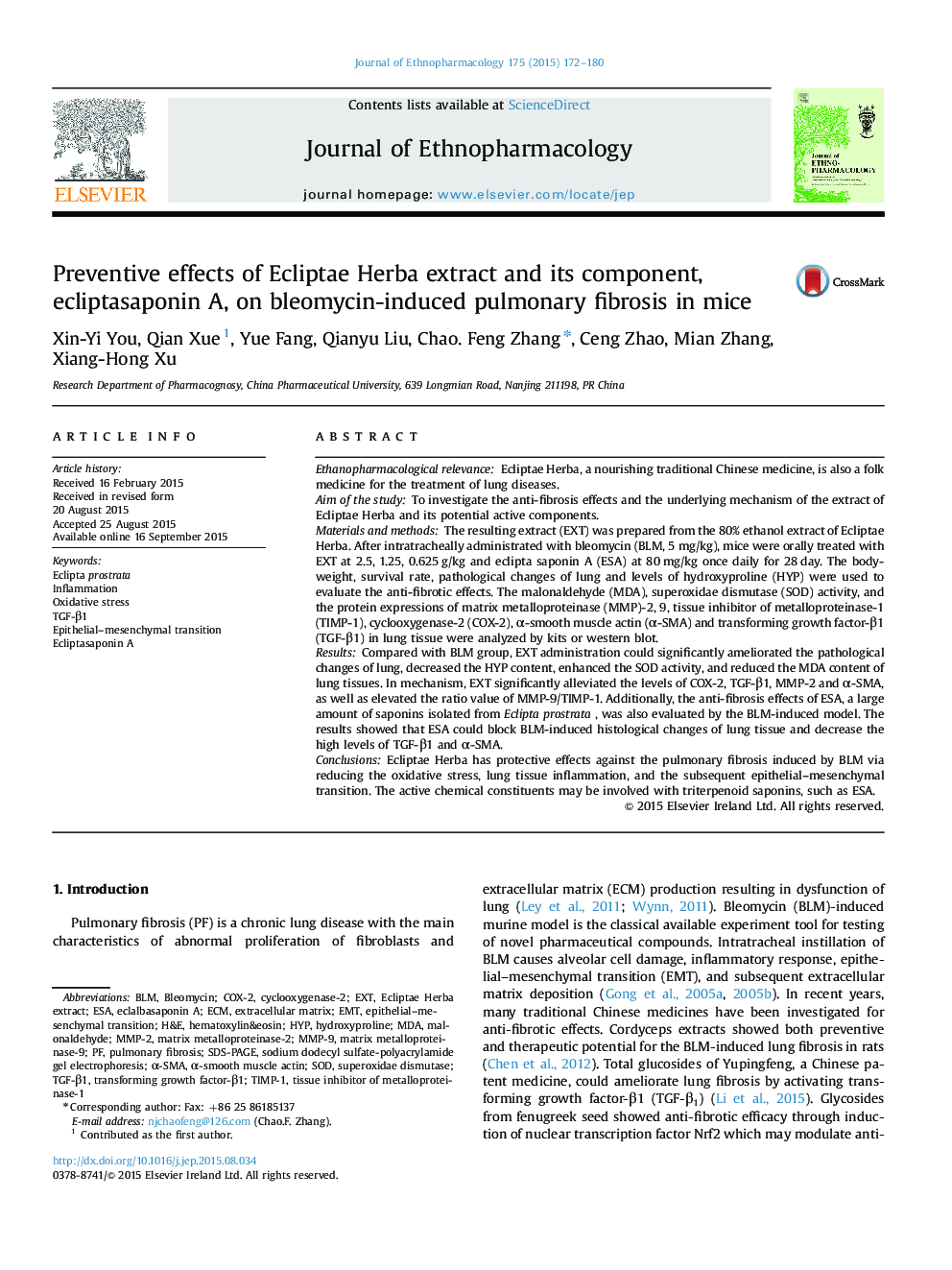| Article ID | Journal | Published Year | Pages | File Type |
|---|---|---|---|---|
| 2544917 | Journal of Ethnopharmacology | 2015 | 9 Pages |
Ethanopharmacological relevanceEcliptae Herba, a nourishing traditional Chinese medicine, is also a folk medicine for the treatment of lung diseases.Aim of the studyTo investigate the anti-fibrosis effects and the underlying mechanism of the extract of Ecliptae Herba and its potential active components.Materials and methodsThe resulting extract (EXT) was prepared from the 80% ethanol extract of Ecliptae Herba. After intratracheally administrated with bleomycin (BLM, 5 mg/kg), mice were orally treated with EXT at 2.5, 1.25, 0.625 g/kg and eclipta saponin A (ESA) at 80 mg/kg once daily for 28 day. The bodyweight, survival rate, pathological changes of lung and levels of hydroxyproline (HYP) were used to evaluate the anti-fibrotic effects. The malonaldehyde (MDA), superoxidae dismutase (SOD) activity, and the protein expressions of matrix metalloproteinase (MMP)-2, 9, tissue inhibitor of metalloproteinase-1 (TIMP-1), cyclooxygenase-2 (COX-2), α-smooth muscle actin (α-SMA) and transforming growth factor-β1 (TGF-β1) in lung tissue were analyzed by kits or western blot.ResultsCompared with BLM group, EXT administration could significantly ameliorated the pathological changes of lung, decreased the HYP content, enhanced the SOD activity, and reduced the MDA content of lung tissues. In mechanism, EXT significantly alleviated the levels of COX-2, TGF-β1, MMP-2 and α-SMA, as well as elevated the ratio value of MMP-9/TIMP-1. Additionally, the anti-fibrosis effects of ESA, a large amount of saponins isolated from Eclipta prostrata , was also evaluated by the BLM-induced model. The results showed that ESA could block BLM-induced histological changes of lung tissue and decrease the high levels of TGF-β1 and α-SMA.ConclusionsEcliptae Herba has protective effects against the pulmonary fibrosis induced by BLM via reducing the oxidative stress, lung tissue inflammation, and the subsequent epithelial–mesenchymal transition. The active chemical constituents may be involved with triterpenoid saponins, such as ESA.
Graphical abstractFigure optionsDownload full-size imageDownload high-quality image (197 K)Download as PowerPoint slide
